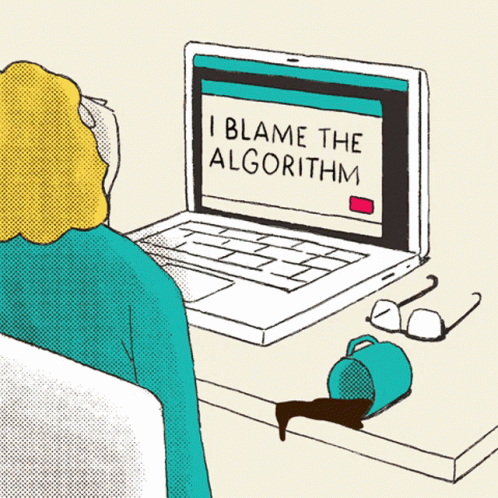Using Algorithms and Data Structures to Solve Problems
All about how, when, and when not to use algorithms and data structures.

Algorithms and data structures are like tools that help you solve problems. You don't always need them, but when things get tricky, they can make solving problems much easier.
Algorithms and Data Structures: Your Digital Toolbox
While you don't always need to know a lot about algorithms and data structures to write code, but understanding them can help you solve tough problems. Let's learn more about these tools!
What Are Algorithms?
Algorithms are like recipes—they tell you step-by-step how to solve a problem. If you're new, you can learn from beginner-friendly places like FreeCodeCamp or Programiz.
- Bubble Sort: This is like learning to ride your first bike—not the fastest, but it gets you started. Bubble sort goes through the list and swaps things if they're in the wrong order. It works well for small lists. You can learn more with Programiz's Bubble Sort guide.
- Binary Search: Imagine you have a sorted list and need to find something quickly—like using a GPS to get somewhere without taking wrong turns. Learn more about it with Coursera's 'Algorithms Part 1'.
- Dijkstra's Algorithm: This is like using Google Maps to find the fastest way somewhere. It finds the shortest path but only works if there are no negative numbers. Check out Coursera or FreeCodeCamp for more.
- Dynamic Programming: Think of this as a magic trick that makes solving repeated problems easier. Instead of solving the same thing over and over, it remembers the answers. Learn more at Programiz.
- Two-Pointer Technique and Sliding Window: These are helpful when you want to look at pairs or sections of a list. It's like using two fingers to quickly count things in a row.
| Algorithm | When to Use | When Not to Use |
|---|---|---|
| Bubble Sort | When you have a small list that is easy to sort. | When you have a big list; it's very slow for large amounts of data. |
| Binary Search | When you need to quickly find something in a sorted list. | When the list is not sorted; it won't work on unsorted data. |
| Dijkstra's Algorithm | To find the shortest path, like when finding the quickest route on a map. | When the paths have negative numbers; use a different method instead. |
| Dynamic Programming | When problems can be split into smaller problems that are solved many times. | When problems don't repeat; it's better to use a simpler method. |
| Two-Pointer/Sliding Window | To find parts of a list that add up to something, or find pairs. | When the data isn't easy to split or when pointers aren't helpful. |

What Are Data Structures?
Data structures are like boxes that help you organize things better. Here are some examples:
- Arrays and Lists: These are like boxes that hold things in a certain order. Arrays have a fixed size, while lists can grow and shrink.
- Stacks and Queues: Stacks are like a stack of books—you take the top one off first (Last In, First Out). Queues are like waiting in line—you get served in the order you arrive (First In, First Out).
- Hash Tables: Imagine a magic box that helps you find anything you put in it really quickly. That's a hash table.
- Graphs and Trees: Graphs and trees help show connections. Trees are good for showing things that branch out, like a family tree, while graphs are great for showing things that connect in many directions. To learn more, check out Coursera's course on Graphs and Trees or the Programiz tutorial.
| Data Structure | When to Use | When Not to Use |
|---|---|---|
| Arrays and Lists | When you need to store things in order, and the size won't change. | When you need to change the size often; arrays can't grow easily. |
| Stacks | When you need to take things out in the opposite order they went in, like undoing. | When you need to get things randomly; stacks only let you take the last thing first. |
| Queues | When you need to take things out in the order they went in, like waiting in line. | When you need random access; queues only let you take the first thing first. |
| Hash Tables | When you need to find things super fast, like looking up a word in a dictionary. | When the order matters; hash tables mix things up and don't keep them in order. |
| Graphs and Trees | When you need to show relationships, like a family tree or a network. | When a simple list can do the job without all the extra work of graphs or trees. |
Solving Problems Like a Hero
Now that you know about algorithms and data structures, it's time to solve problems! Here's how:
- Understand the Problem: Before you start, make sure you know what the problem is. Draw pictures or talk it out to help understand.
- Choose the Right Tool: Pick the right algorithm or data structure. Like choosing the right tool for cooking—don't use a huge knife if you just need to spread butter.
- Make It Better: Your first try might not be perfect. Make it cleaner and faster, just like tidying your room. If the problem repeats, use dynamic programming.
- Test a Lot: Test your solution in different ways. Imagine all the weird things that could happen and see if your solution still works. Our debugging tips can help.
- Think and Improve: You don't need to be perfect, but you can always learn from what you do. Think about how using these tools helps you solve problems better. For more ideas, check out soft skills on Programiz.
You're Ready to Go!
Great job! Now you know how to use algorithms and data structures to solve problems. Just remember—they are tools to help you, so keep your code simple, keep learning, and have fun!




